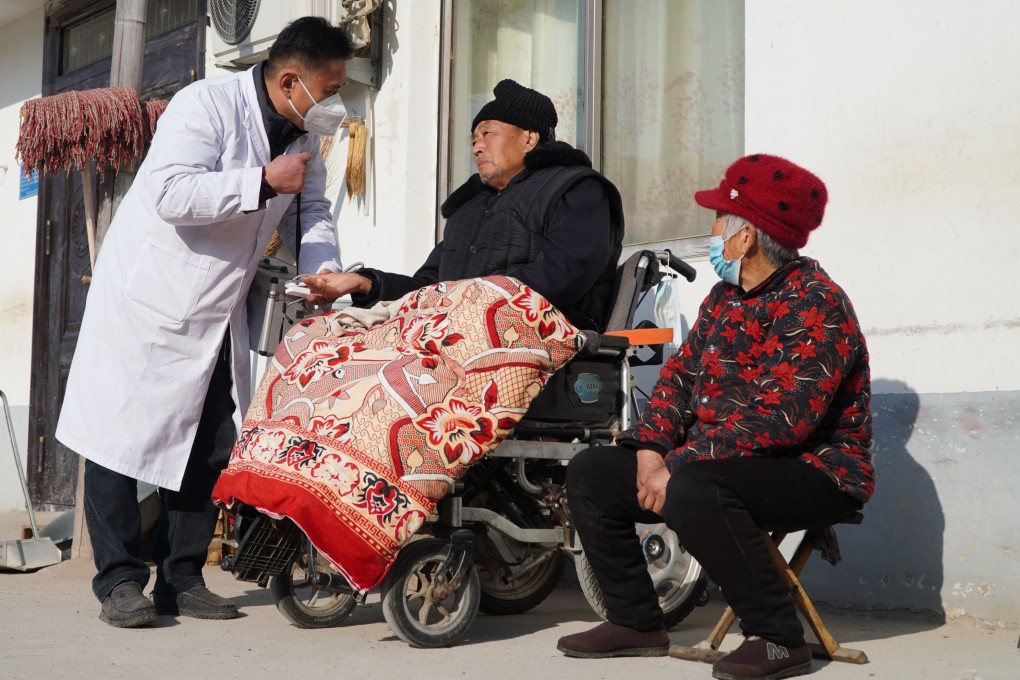Advertisement
Why did Covid-19 wave hit China’s countryside earlier than expected?
- Returning migrant workers and students brought a surge to rural areas weeks ahead of the Lunar New Year mass migration
- Many grass-roots clinics were caught off guard but while cases are falling, experts warn the greatest test lies ahead
Reading Time:4 minutes
Why you can trust SCMP
3

In nearly three decades as a village doctor, Zhu Wenbing has never seen his clinic under so much pressure, nor supplies of medicines run so low.
The worst moments were in late December, when the Covid-19 Omicron variant raged through his village in China’s eastern Shandong province. At its peak, Zhu was seeing more than 50 patients a day, and did not have enough medicines to treat them.
“All the Covid-related drugs were hard to get, and I kept phoning the [pharmaceutical company] salespeople and [township] clinics to make sure the patients could access the necessary medicines,” Zhu said. “The price of medicines soared, [and that is] so unfair to the patients.”
Advertisement
Zhu is one of just over a million doctors across China’s vast countryside who have been bracing for the arrival of the pandemic, after three years of protection under the country’s zero-Covid policy.
But the wave hit rural areas earlier than expected, leaving grass-roots hospitals and clinics struggling to cope.
Advertisement
The official travel season for Lunar New Year – the biggest annual human migration in the world – runs from January 7 to February 15 this year, and waves of infections were anticipated once it got under way.
Advertisement
Select Voice
Choose your listening speed
Get through articles 2x faster
1.25x
250 WPM
Slow
Average
Fast
1.25x